German Shepherd Enhanced Overview: Breed Traits, History & Care
The German Shepherd is known worldwide for its intelligence, loyalty, and versatility. Whether serving as a working dog or a family companion, this breed stands out for its physical strength and sharp mind. Its unique blend of protective instincts, high energy, and trainability makes it ideal for many roles, from police work to therapy.
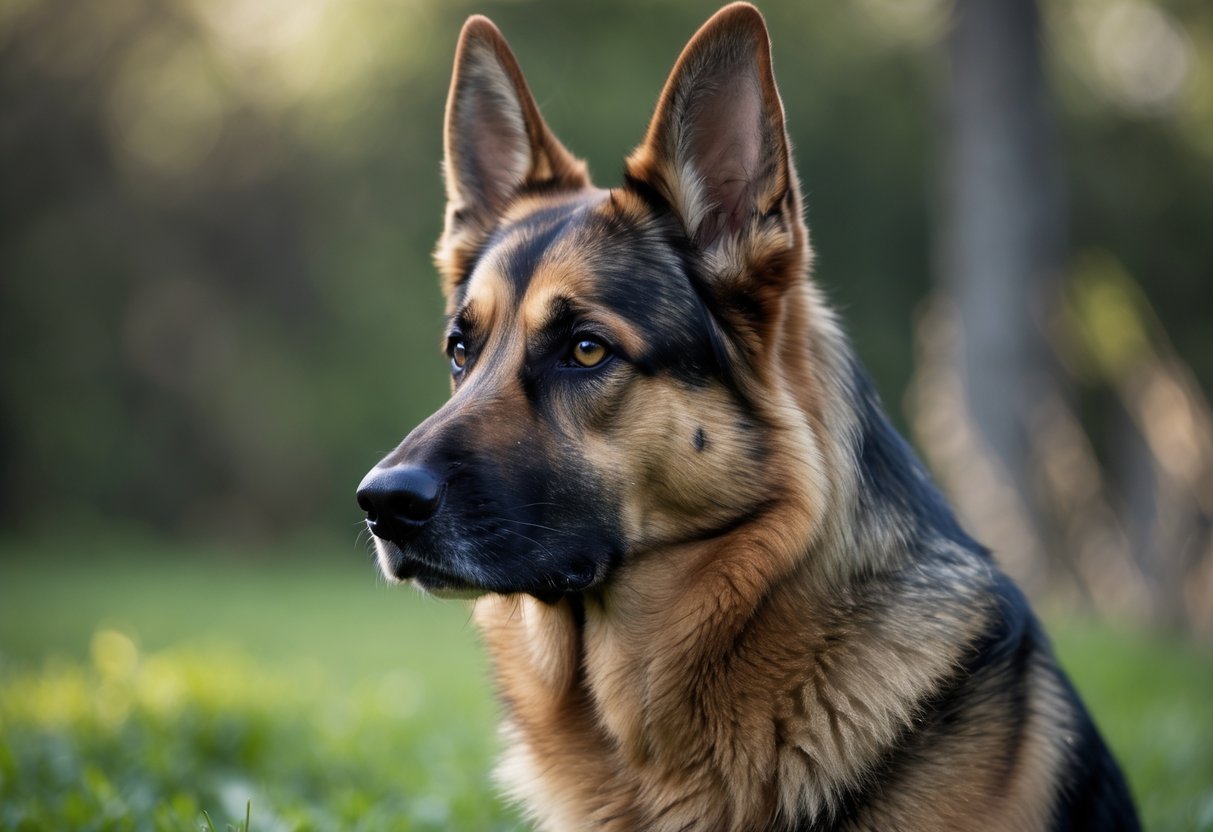
This breed has evolved through careful breeding focused on both working ability and appearance. German Shepherds vary between working and show lines, each with distinct traits that suit different owners and lifestyles. Understanding these differences is key to choosing the right dog and providing the care it needs.
German Shepherds require regular exercise, mental challenges, and consistent training to thrive. Their health and grooming needs also demand attention, making them best suited for owners ready to commit time and effort. This overview explores these core aspects to give a clear picture of what owning a German Shepherd entails.
Key Takeways
- German Shepherds combine strength, intelligence, and loyalty for diverse roles.
- They come in different types, each suited for specific lifestyles and needs.
- Proper care includes exercise, mental stimulation, and health maintenance.
Defining the German Shepherd Dog
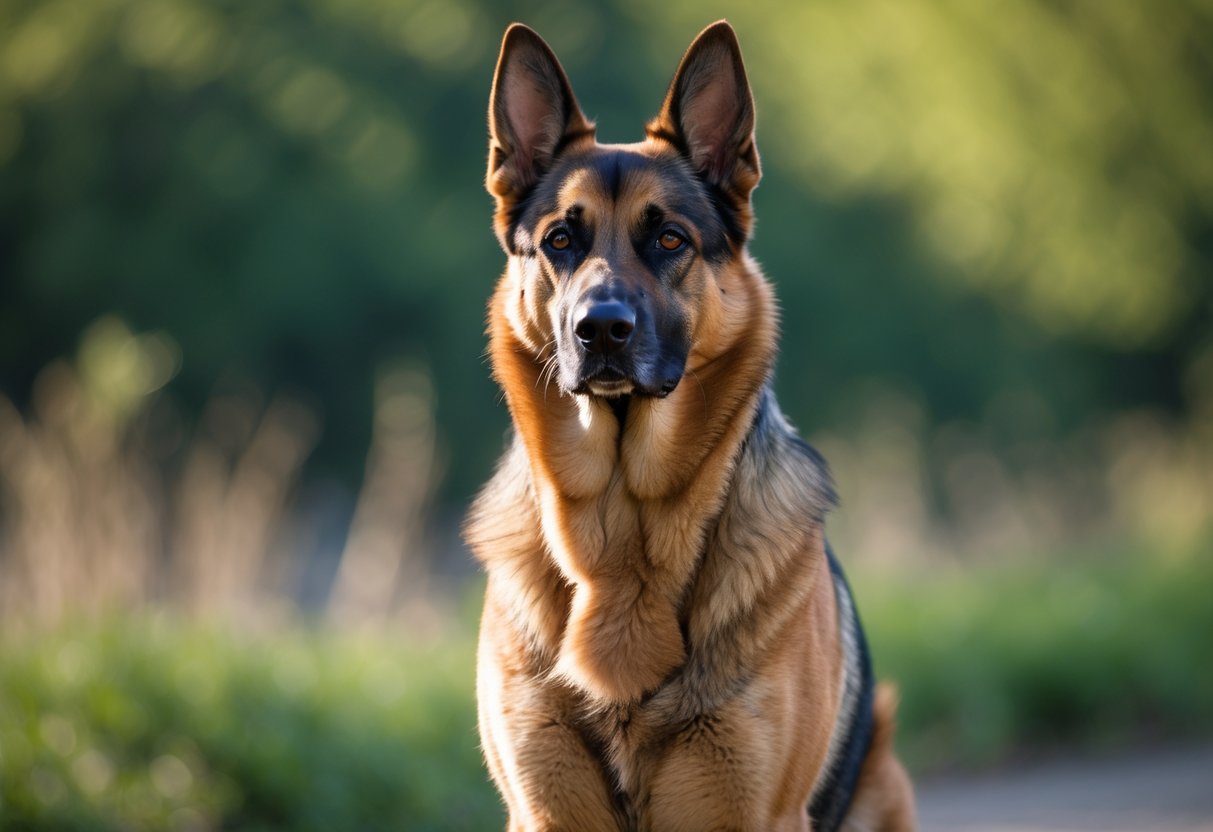
The German Shepherd is a well-recognized dog breed known for its balanced build and working ability. It has clear breed standards that outline its physical traits and temperament. This breed combines strength, agility, and intelligence, making it versatile for different roles.
Breed Recognition and Standards
The German Shepherd is officially recognized by major organizations like the American Kennel Club (AKC). The breed standard sets specific criteria for size, shape, and coat. Males typically stand 24 to 26 inches tall at the shoulder. Females are slightly smaller, ranging from 22 to 24 inches.
The dog’s body is longer than it is tall, with a strong, muscular frame. The coat is double-layered, dense, and usually medium length. Colors vary, but pale or white coats are disqualified. Features like erect ears, almond-shaped eyes, and a black nose are essential.
The breed standard also includes strict rules on temperament. The dog must be confident and alert but not aggressive. Faults like shyness or nervousness are penalized, and certain traits such as cropped ears or docked tails lead to disqualification.
Distinctive Qualities
The German Shepherd stands out for its combination of intelligence and loyalty. It shows courage and a strong work ethic in its tasks, whether as a service dog, herder, or family companion. The breed’s gait is smooth and efficient, with an elastic trot that uses strong hindquarters to propel the body forward.
The head is noble and well-proportioned, with a clean shape and intelligent expression. The muscles are well-defined but not bulky, giving a balance of power and agility. The tail is bushy and carried low when at rest but rises slightly when excited.
Behaviorally, the German Shepherd is reserved with strangers but devoted to its family. It shows self-confidence without hostility and is willing to work with focus and discipline. This breed requires regular exercise and mental challenge to maintain its health and happiness.
Origins and Historical Development
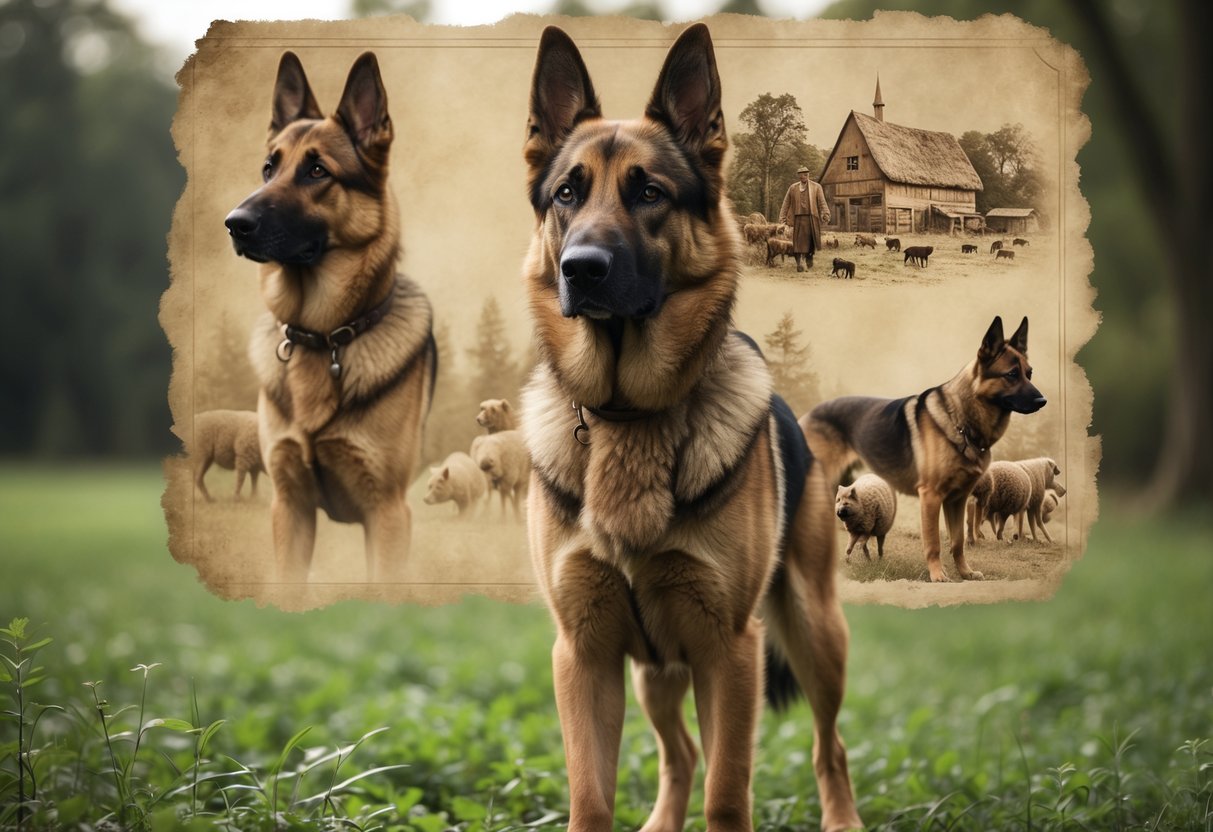
The German Shepherd breed began as a group of regional herding dogs in Germany. Their qualities were shaped by selective use on farms and in rural settings. Later, one key figure helped to create a formal breed standard and guide its future as a working dog.
Development in 19th Century Germany
In 19th century Germany, there was no single type called the German Shepherd. Instead, various herding dogs were used by farmers and shepherds to manage livestock. These dogs were valued for intelligence, agility, and protective instincts.
Farmers across central and southern Germany chose dogs that could work well in rugged landscapes. These early dogs were practical workers, not bred for uniform looks but for function. Traits like endurance and alertness were crucial.
This working background formed the genetic base from which a more uniform breed could be developed. Over time, the need for a standardized working dog became clear as dogs were increasingly used for roles beyond herding.
Max von Stephanitz’s Role
Max von Stephanitz was central to the German Shepherd’s formal creation. In the late 1800s, he sought a dog that combined intelligence, strength, and obedience. At a German dog show in 1899, he found Horand von Grafrath, who matched his ideal.
Von Stephanitz founded the Verein für Deutsche Schäferhunde (SV), a club focused on breeding dogs with specific working traits. He emphasized careful selection to maintain strong physical and mental abilities.
Under his leadership, breeders followed strict standards that balanced appearance with function. This approach ensured that German Shepherds excelled in herding, police work, and military duties, setting the breed apart worldwide.
Physical Characteristics and Appearance
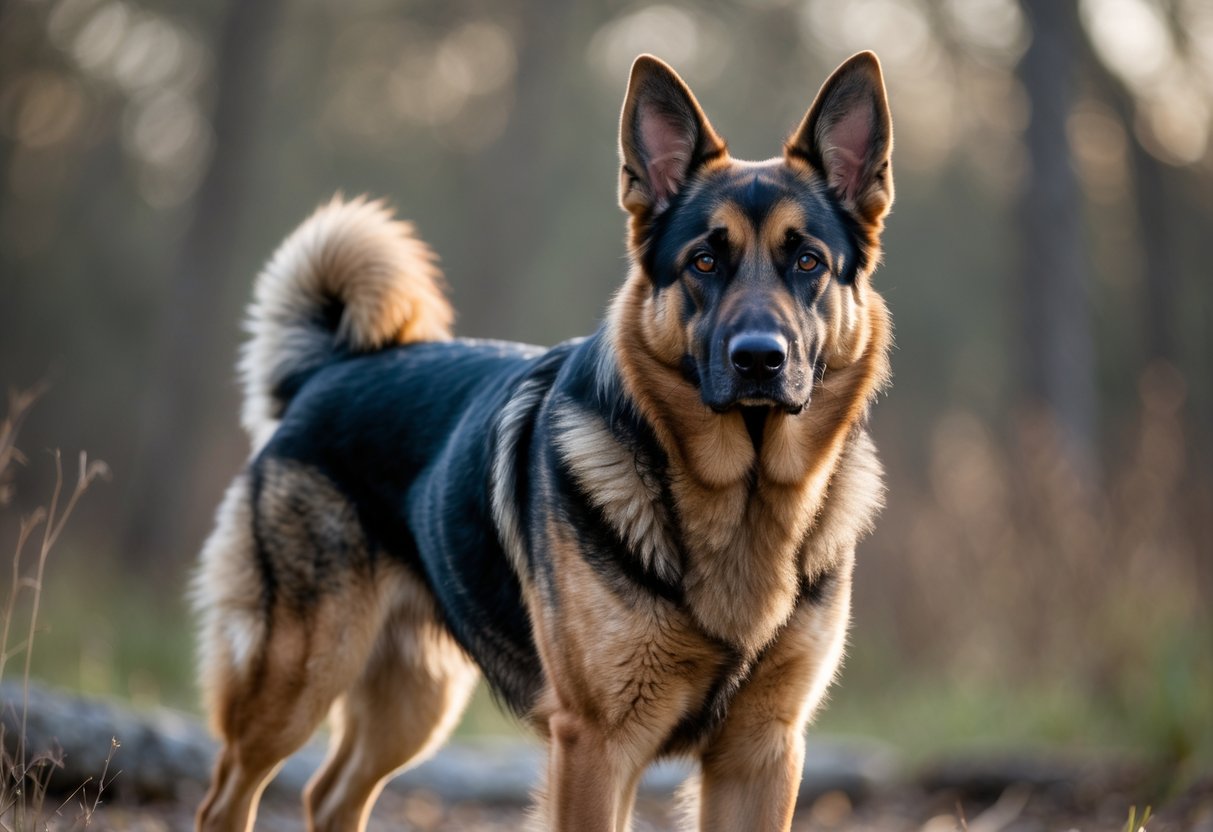
The German Shepherd has a distinct look defined by its size, coat, and facial features. It is a strong, well-proportioned dog with traits that highlight both its power and agility. These physical markers play a key role in its identity as a working and family dog.
Size and Structure
German Shepherds are large dogs with a muscular, balanced build. Males stand about 24 to 26 inches tall at the shoulder and usually weigh between 65 to 90 pounds. Females are slightly smaller, reaching 22 to 24 inches tall and weighing 50 to 70 pounds.
Their body is longer than tall, giving them an athletic shape. The back slopes slightly from the shoulders to the tail, supporting agility and endurance. They have strong, straight legs and a deep chest that allows for good lung capacity. This design helps the breed maintain stamina during tasks that require strength and speed.
Coat Types and Colors
This breed has a double coat made up of two layers. The outer coat is dense, straight, and coarse, protecting the dog from weather conditions. Beneath this lies a softer, insulating undercoat that helps regulate body temperature.
German Shepherds come in several colors. The most common is black and tan, but sable is also popular. Sable features hairs with multiple bands of color, creating a shaded effect. Some may have solid black coats, or less common shades like liver or blue. The variety of coat colors adds to the breed’s visual appeal.
Breed-Specific Features
The German Shepherd’s head is strong and wedge-shaped, which is a hallmark of the breed. It has large, erect ears that stand upright and show alertness. This ear shape is linked to their keen sense of hearing.
Their eyes are medium-sized and almond-shaped, often dark brown. This eye shape and color give the dog a clear, intelligent expression. Another feature is the bushy tail, which hangs low at rest but raises in a slight curve when the dog is alert or excited. These traits highlight the German Shepherd’s balance of strength, focus, and readiness.
Temperament and Personality
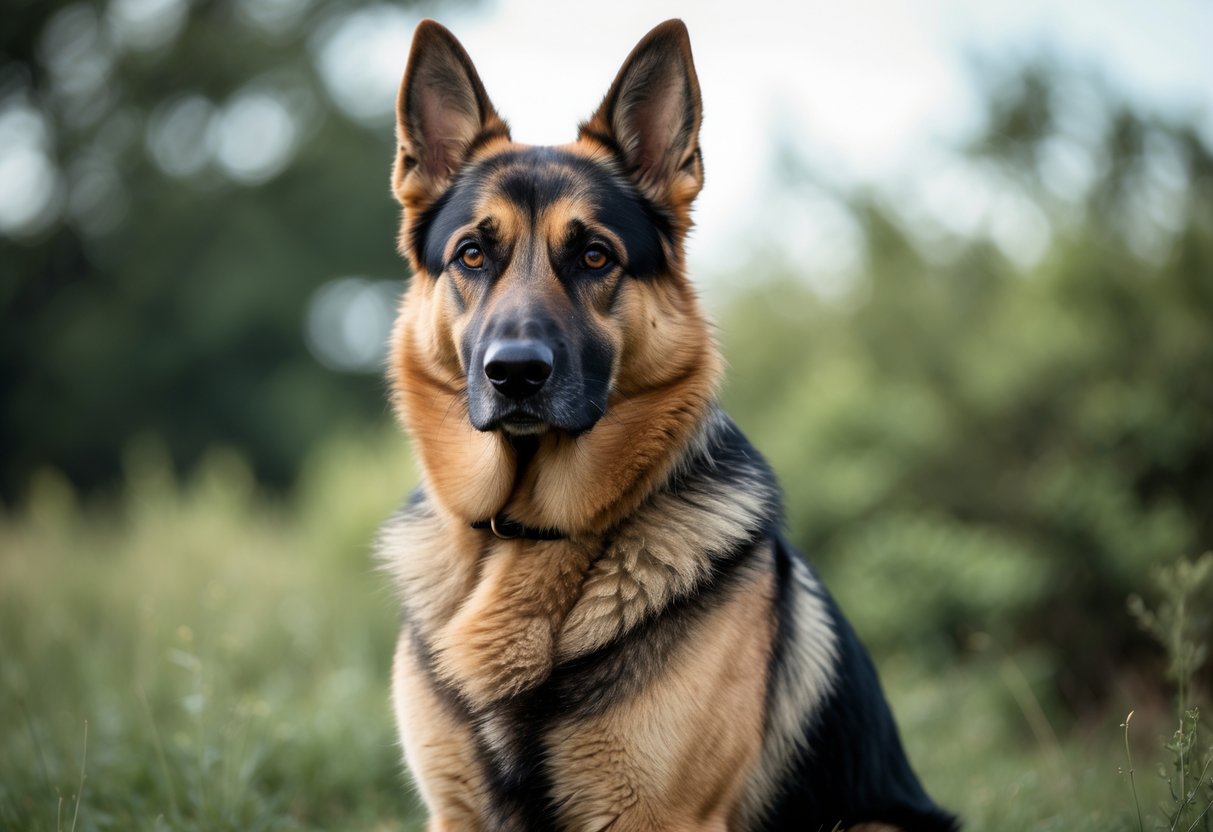
German Shepherds show a well-rounded personality with sharp minds and strong emotional bonds. Their behavior reflects a balance of quick thinking and deep loyalty, which impacts how they react to training and protect their family.
Intelligence and Trainability
German Shepherds rank high in intelligence among dog breeds. They learn commands quickly and respond well to consistent, clear training. Their ability to solve problems makes them capable in many roles, including service work or obedience competitions.
Training should include positive reinforcement and mental challenges to keep their minds active. Without stimulation, they can become bored, which may lead to unwanted behaviors. Daily tasks, varied exercises, and new commands help maintain their focus and enthusiasm.
They adapt well to new environments when trained properly. Early socialization is key to developing a stable, manageable temperament. Proper training techniques harness their intelligence and avoid stubbornness.
Loyalty and Protective Instincts
Loyalty is a defining trait of German Shepherds. They form strong attachments to their family and show unwavering commitment. This deep bond makes them reliable companions.
Their protective instincts are natural and strong. German Shepherds instinctively guard their home and loved ones but are not aggressive without cause. They respond well to training that directs these instincts in a controlled way.
Owners should understand the breed’s need for clear boundaries. Proper socialization teaches them to differentiate between real threats and everyday situations. This balance is essential for safe, confident protection without undue fear or aggression.
Exercise and Activity Needs
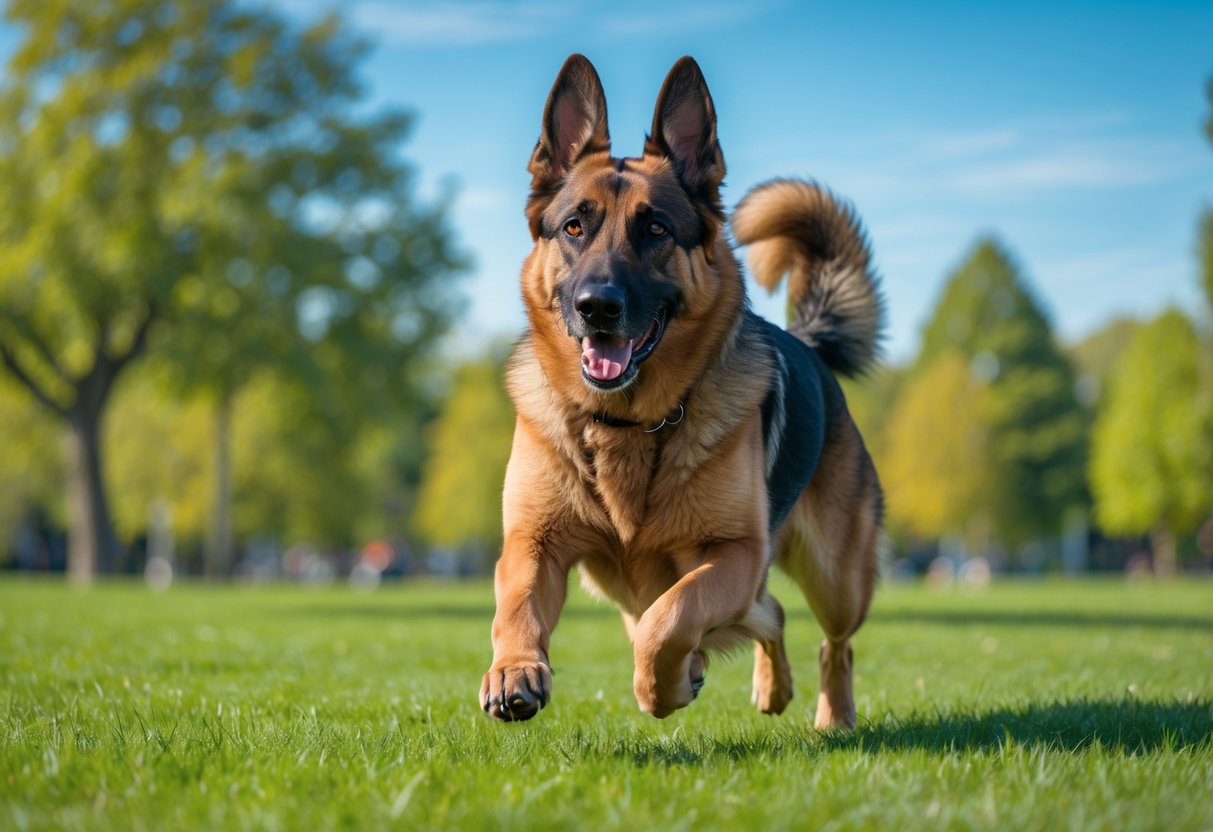
A German Shepherd requires a mix of physical and mental activities every day to stay healthy and balanced. Their high energy and intelligence mean exercise must challenge both their body and brain. Careful planning of their routine will prevent behavior problems and promote overall well-being.
Daily Exercise Requirements
Adult German Shepherds need 90 minutes to 2 hours of daily physical activity. This includes structured walks, running, and hiking, preferably with varied terrain to engage their muscles fully. Puppies require shorter, more frequent sessions to protect growing joints—about 5 minutes per month of age twice daily.
Agility training or obstacle courses are effective for improving coordination and strength. Activities like fetch or using a dog backpack add purpose to their exercise. It’s important to warm up and cool down during intense workouts to reduce injury risk.
For seniors, exercise should be gentler but consistent, focusing on leash walks, swimming, or light nose work to maintain mobility without strain.
Mental Stimulation and Dog Sports
Mental exercise is as crucial as physical activity for a German Shepherd. They benefit from daily brain challenges to satisfy their working-dog instincts. Puzzle toys, scent work, and obedience drills help keep their minds sharp.
Dog sports such as agility, Schutzhund, or advanced obedience classes provide structured mental and physical engagement. These activities teach focus and discipline while offering socialization opportunities.
A good balance includes about 15-20 minutes of mental stimulation for every 45-60 minutes of physical activity. This prevents boredom and supports positive behavior, ensuring the dog stays calm and attentive.
Training Approaches and Versatility
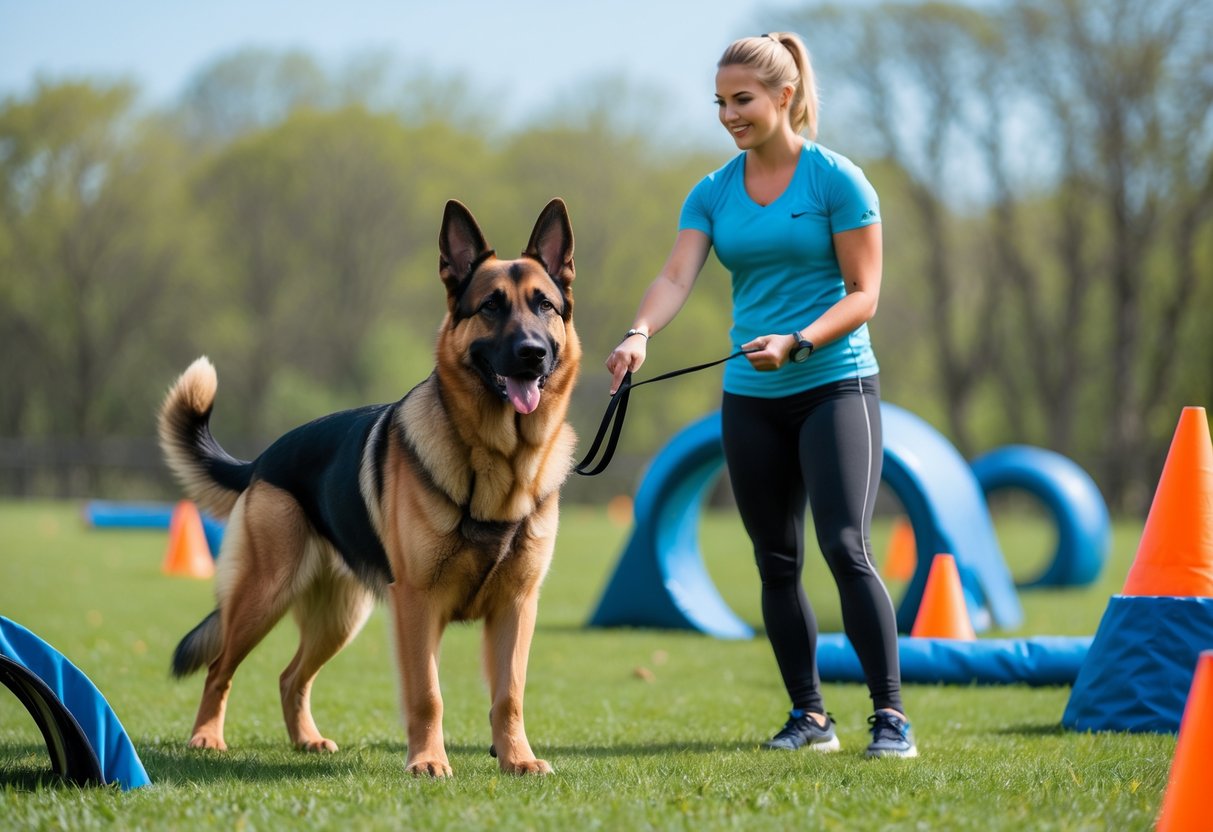
German Shepherds require clear, consistent training methods suited to their intelligence and energy. Their adaptability allows them to excel in many roles, from family pets to specialized working dogs. Effective training builds on basic commands and uses positive reinforcement to manage their protective instincts.
Training Techniques and Best Practices
Training a German Shepherd starts with mastering basic commands like sit, stay, and come. These commands create a foundation for communication and help control the dog’s high energy.
Positive reinforcement, such as treats or praise, encourages good behavior. Consistency in routine and clear boundaries are essential to prevent confusion.
Socialization from an early age helps them adjust to different people and environments. Structured exercises keep them mentally engaged and prevent boredom.
Balanced training combines obedience with activities that use their natural instincts, like tracking or agility. This approach develops a well-rounded dog that listens and remains focused during tasks.
Working Dog Roles and Adaptability
German Shepherds thrive in a wide range of working roles due to their intelligence and quick learning ability. They serve as police dogs, search and rescue dogs, service animals, and protection dogs.
Their versatility is rooted in a strong work ethic and loyalty. Training adjusts to specific job demands, whether it’s controlled aggression for protection or calm focus for assistance work.
These dogs adapt well to diverse environments, from urban settings to outdoor fields. Their ability to switch between high-energy tasks and calm obedience makes them valuable in many professional and personal settings.
| Role | Key Trait | Training Focus |
|---|---|---|
| Police Dog | Protection and obedience | Controlled aggression, tracking |
| Search and Rescue | Stamina and scent work | Tracking and endurance |
| Service Animal | Calmness and responsiveness | Socialization and cues |
| Family Pet | Loyalty and companionship | Basic obedience and socialization |
Care, Grooming, and Health Considerations
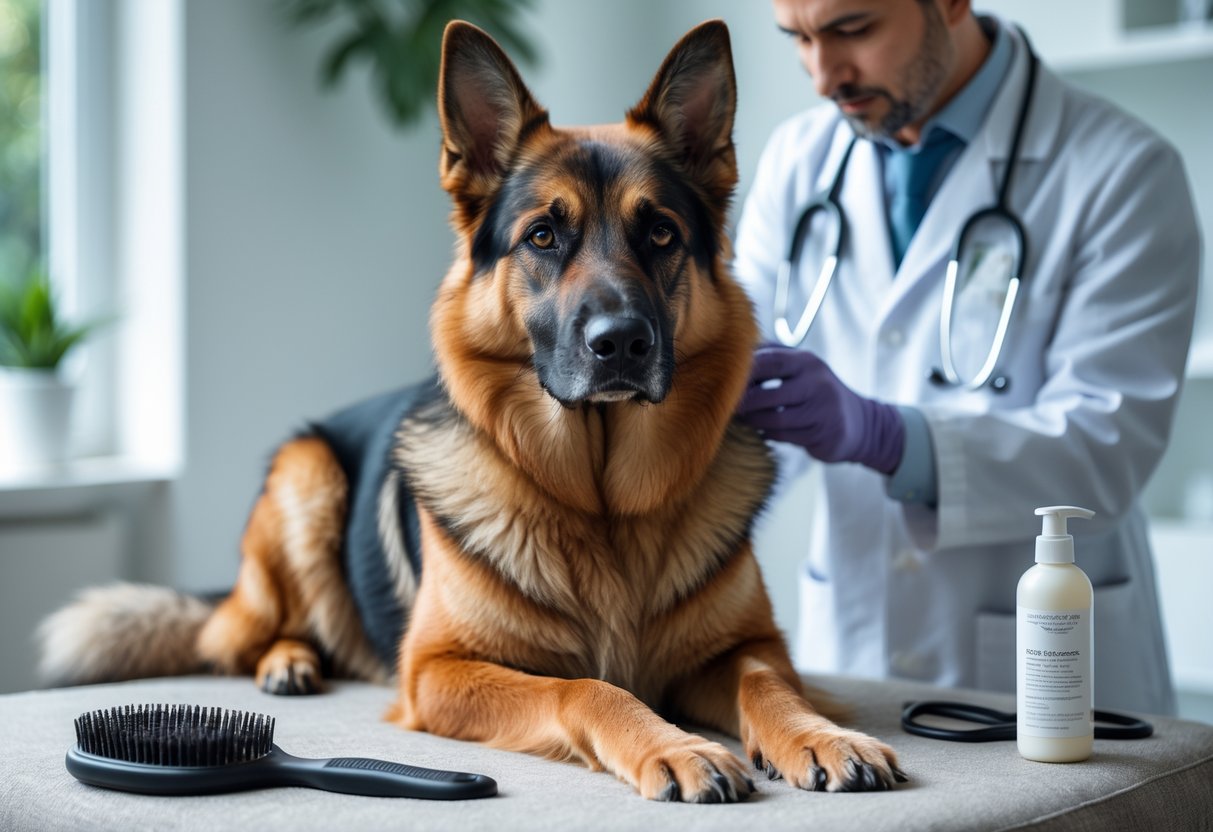
German Shepherds need regular attention to their coat, health, and behavior to stay strong and happy. Proper grooming controls shedding and skin health. Health concerns like hip dysplasia require monitoring. Managing their energy and behavior helps prevent problems like destructive chewing.
Coat Maintenance and Grooming
German Shepherds have a thick double coat that sheds heavily year-round. They usually blow their coat twice a year, in spring and fall. During these times, daily brushing is needed to remove loose hair and keep skin healthy.
Bathing should be done only a few times a year with dog-specific shampoo. Too many baths strip natural oils, causing dry skin. Nails need regular trimming or grinding, usually every month unless exercise naturally wears them down.
Ear cleaning is important but should only be done if debris or odor appears. Over-cleaning or adding moisture can cause infections. Teeth brushing and regular check-ups support overall health.
Genetic Health Issues
Hip dysplasia affects about 20% of German Shepherds. It causes joint pain and limping, especially later in life. Elbow dysplasia is another joint problem causing front leg pain. Regular vet check-ups can catch these early.
Degenerative myelopathy is a spinal condition leading to weakness in the hind legs. It cannot be cured but physical therapy may help maintain muscle function.
Cancer varies in older dogs and can affect organs like the spleen and lungs. Signs depend on cancer type but may require surgery or chemotherapy.
Routine health exams and genetic testing from breeders reduce the risk of inheriting these conditions.
Preventing Behavioral Issues
German Shepherds are active and highly intelligent. They need at least 1 to 2 hours of exercise daily for both body and mind. Lack of activity can lead to unwanted behaviors like excessive barking, digging, or destructive chewing.
Consistent training from an early age builds good habits. Socialization with other dogs and people is essential to prevent fear or aggression.
Mental challenges like puzzle toys and obedience tasks help reduce boredom. Owners should provide a firm but positive approach using rewards to guide behavior.
Keeping German Shepherds on leash or in a fenced yard prevents impulsive chasing of wildlife or cars.
Frequently Asked Questions
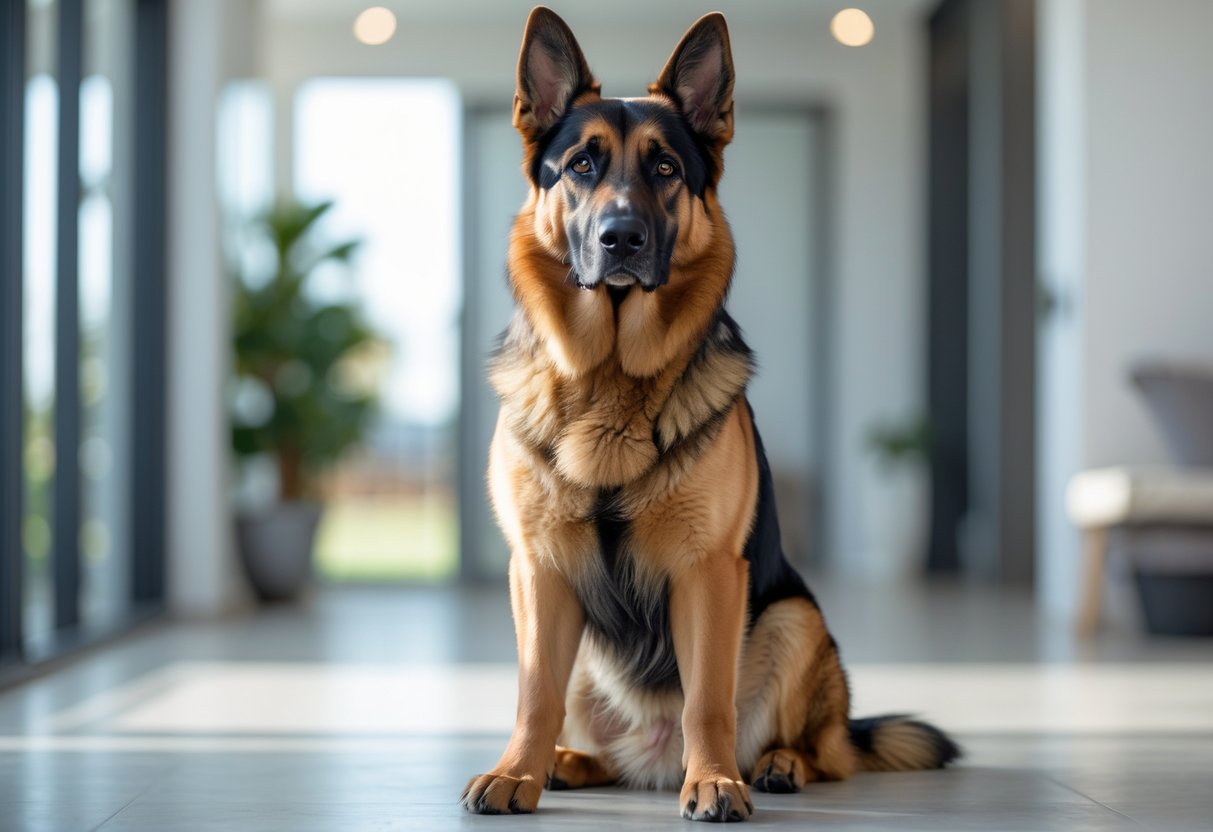
German Shepherds require careful attention to their health, size, and lineage. Cost and color also matter to many potential owners. This section answers key questions related to these topics.
What are the common health issues that may affect German Shepherds?
German Shepherds often face hip dysplasia, a joint problem causing pain and mobility issues. They can also suffer from elbow dysplasia and degenerative myelopathy, which affects their spine.
Other concerns include allergies, stomach bloat, and skin conditions. Regular vet checkups help catch these early.
How much does a German Shepherd puppy typically cost?
Prices for German Shepherd puppies usually range from $500 to $2,500. Factors like bloodline, breeder reputation, and location impact the cost.
Puppies from show-quality or working lines tend to be more expensive.
What is the average lifespan of a German Shepherd?
The average lifespan of a German Shepherd is about 9 to 13 years. Proper diet, exercise, and healthcare can influence longevity.
Certain health conditions may affect how long they live.
What is the standard size range for an adult German Shepherd?
Adult males typically weigh between 65 and 90 pounds and stand 24 to 26 inches tall at the shoulder. Females usually weigh 50 to 70 pounds and measure 22 to 24 inches in height.
Size can vary slightly depending on genetics and diet.
How can you identify the original bloodline of a German Shepherd?
Original bloodlines are confirmed through pedigree papers from recognized breed registries. Look for lineages from German or European breeders known for working German Shepherds.
DNA testing can also verify lineage in some cases.
What are the recognized color variations of German Shepherds?
Common colors include black and tan, sable, and solid black. Less common variations are white, liver, and blue.
Color does not affect the dog’s temperament or working ability.
